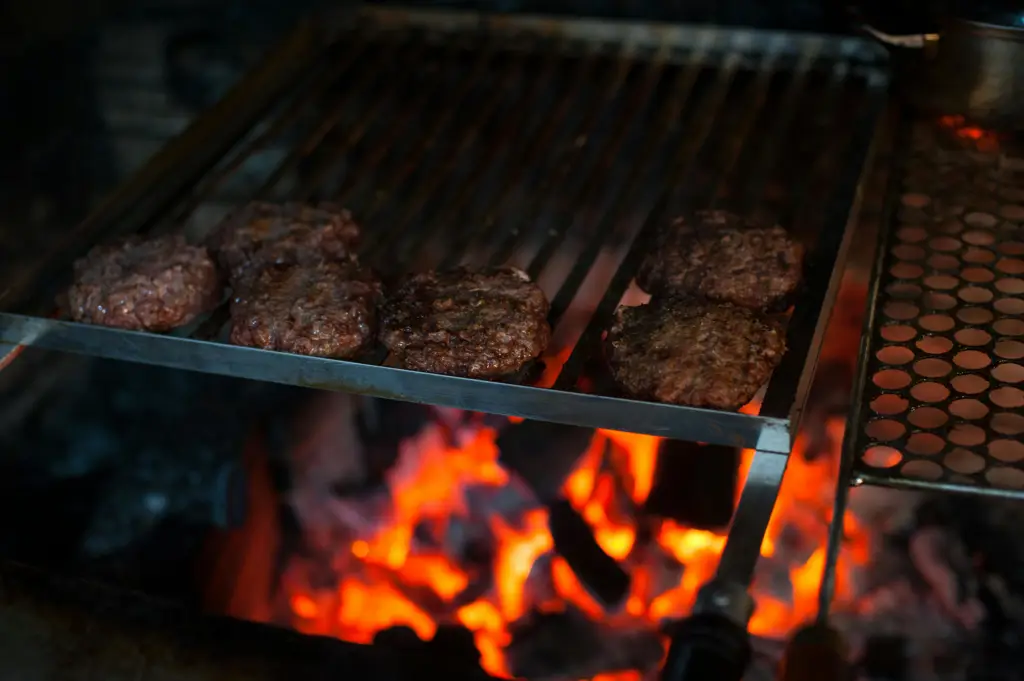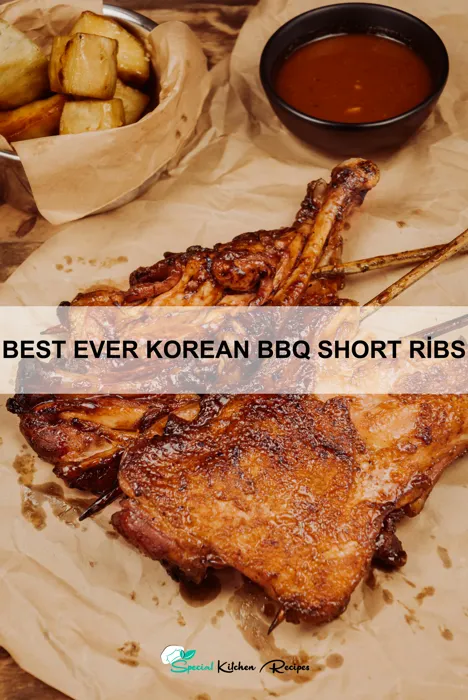Classic Korean Bibimbap, meaning mixed rice, is a vibrant and nutritious dish that transcends its simple name. Its origins are deeply rooted in Korean history, evolving from humble peasant fare to a globally recognized culinary masterpiece. While pinpointing an exact origin date is difficult, its foundational elements trace back centuries, reflecting the resourcefulness and agricultural traditions of the Korean peninsula. Early forms likely consisted of leftover rice and readily available vegetables, a practical and economical meal for farmers and commoners. The strategic mixing of ingredients ensured balanced nutrition, a crucial aspect of Korean cuisine philosophy.
The evolution of Bibimbap into the visually stunning and complex dish we know today is a testament to Korea’s culinary creativity. Over time, the addition of seasoned meats, a fried egg, and gochujang (Korean chili paste) elevated Bibimbap beyond mere sustenance, transforming it into a celebratory dish. While regional variations exist, the core components remain consistent: a bed of warm white rice, an array of colorful vegetables (including spinach, bean sprouts, carrots, and seasoned zucchini), a protein source (beef, chicken, or tofu are common), and the essential gochujang providing a rich, savory, and slightly spicy flavor. The meticulous arrangement of ingredients before mixing is also crucial, reflecting a commitment to both taste and aesthetics.
Bibimbap’s cultural significance in Korea is immense. It’s not just a dish; it’s a representation of balance, harmony, and the country’s agricultural heritage. The diverse range of colorful vegetables symbolizes the vibrancy of Korean culture and the abundance of nature. It’s frequently served during festivals and celebrations, and its popularity continues to surge, both domestically and internationally, with an estimated 80% of Koreans consuming it at least once a month. This widespread popularity has led to many variations, from seafood Bibimbap to vegetarian options, showcasing its adaptability and enduring appeal. In recent years, Bibimbap has gained significant traction globally, appearing on menus in restaurants worldwide, solidifying its position as a beloved and iconic dish.
Beyond its culinary merits, Bibimbap also holds a significant place in Korean cuisine’s global recognition. Its appearance in international culinary competitions and its presence in numerous Korean restaurants abroad have contributed significantly to the rising popularity of Korean food as a whole. Its ease of preparation (while maintaining a sophisticated presentation) and its ability to cater to various dietary needs have further fueled its international success. The dish’s inherent visual appeal, complemented by its complex and satisfying flavors, continues to captivate food enthusiasts across the globe, ensuring Bibimbap’s enduring legacy as a culinary treasure.
Ingredients and Measurements for Classic Korean Bibimbap
Creating a truly authentic and delicious Bibimbap hinges on the quality and precise measurement of your ingredients. This recipe serves 2-3 people. Adjust quantities proportionally for larger servings.
Rice: We recommend using short-grain white rice, such as sushi rice, for its sticky texture which is ideal for Bibimbap. Use 1 ½ cups (180g) of uncooked short-grain white rice. The stickiness helps bind the ingredients together. Rinse the rice thoroughly under cold water until the water runs clear to remove excess starch. This prevents the rice from becoming gummy.
Vegetables (Namul): The beauty of Bibimbap lies in its vibrant array of vegetables. Feel free to adjust the quantities based on your preferences, but maintain a balance of flavors and textures.
- Spinach (Si-namul): 1 cup (50g) fresh spinach. Blanch briefly in boiling water for about 30 seconds, then plunge into ice water to retain its vibrant green color. Squeeze out excess water before seasoning with a pinch of salt, sesame oil, and garlic.
- Bean Sprouts (Kongnamul): 1 cup (50g) bean sprouts. Blanch for 1-2 minutes in boiling water until tender-crisp. Rinse with cold water and season lightly with salt and sesame oil. Avoid overcooking, as this will make them mushy.
- Carrots (Gamja-mu chim): ½ cup (50g) julienned carrots. Sauté in a small amount of sesame oil until tender-crisp. Season with a pinch of salt and a touch of sugar for balance. Julienned carrots are preferred for their visual appeal and even cooking.
- Mushrooms (Beoseot muchim): ½ cup (50g) sliced mushrooms (shiitake or oyster mushrooms are recommended). Sauté in a small amount of sesame oil until softened. Season with soy sauce, garlic, and a pinch of black pepper.
- Cucumber (Oi muchim): ½ cup (50g) thinly sliced cucumber. Season with a little rice vinegar, sesame oil, and a pinch of salt and sugar. This adds a refreshing crunch and acidity to the dish. Do not over-season, as the cucumber will release water.
Protein: The choice of protein is up to you! Here are some suggestions:
- Beef (Bulgogi): 4-6 oz (115-170g) thinly sliced beef, marinated in soy sauce, garlic, ginger, sesame oil, and sugar. Cook until tender and slightly charred.
- Other options: You can substitute the beef with cooked chicken, tofu, or even a fried egg. Adjust the quantity to match the amount of vegetables.
Other Ingredients:
- Gochujang (Korean Chili Paste): 1-2 tablespoons, depending on your spice preference. This adds depth of flavor and a subtle sweetness.
- Sesame Oil: 2 tablespoons, for sautéing vegetables and for a finishing touch.
- Sesame Seeds: 1 tablespoon, toasted for garnish.
- Egg: 1 large egg, fried sunny-side up or cooked to your preference. This adds richness and a beautiful visual contrast.
Important Note: These measurements are guidelines. Feel free to adjust them to your liking. The key is to have a balanced mix of flavors and textures. Fresh, high-quality ingredients are crucial for a truly exceptional Bibimbap.
Preparation of Vegetables (Washing, Chopping, Marination)
The vibrant colors and contrasting textures of the vegetables are crucial to a great Bibimbap. Proper preparation ensures optimal flavor and presentation. This section details the washing, chopping, and marinating techniques for the key vegetables in our Classic Korean Bibimbap recipe.
Washing: Begin by thoroughly washing all vegetables under cold, running water. This removes any dirt, pesticides, or debris. For leafy greens like spinach or lettuce, submerge them in a bowl of cold water, gently swishing them around to loosen any trapped dirt. Then, lift them out and allow them to drain completely. Avoid soaking vegetables for extended periods, as this can lead to nutrient loss and a soggy texture.
Chopping: Consistent chopping is key for both aesthetics and even cooking. Use sharp knives for clean cuts and efficient work. For the following quantities, adjust according to your desired serving size:
- Spinach (시금치): 100g. Wash thoroughly and roughly chop into 1-inch pieces. Blanch in boiling water for 30 seconds, then immediately plunge into an ice bath to stop the cooking process and retain its vibrant green color. Squeeze out excess water gently.
- Carrots (당근): 1 medium (approx. 100g). Peel and julienne into thin matchsticks (approximately 2-3 inches long). Using a vegetable peeler can help create uniform strips.
- Bean Sprouts (콩나물): 150g. Rinse thoroughly under cold water to remove any loose skins or debris. No further chopping is needed.
- Cucumber (오이): ½ medium (approx. 75g). Wash, peel (optional), and thinly slice or julienne, depending on preference. For a visually appealing Bibimbap, consider using both slicing and julienning techniques for a textural contrast.
- Zucchini (애호박): ½ medium (approx. 75g). Wash, and slice into thin half-moons or matchsticks. Similar to the cucumber, consider a mix of shapes for variety.
- Mushrooms (버섯): 100g (e.g., shiitake or oyster mushrooms). Clean with a damp cloth or brush; avoid washing unless absolutely necessary. Slice thinly or into bite-sized pieces.
Marination (Optional but Recommended): While some vegetables are enjoyed raw, marinating enhances the flavor profile of certain ingredients. A simple marinade can add depth and complexity to your Bibimbap. Consider these options:
- Carrot and Zucchini Marinade: Combine 1 tablespoon of soy sauce, ½ tablespoon of sesame oil, ½ teaspoon of sugar, and a pinch of black pepper. Toss the julienned carrots and zucchini in this mixture, letting them sit for at least 15 minutes to allow the flavors to meld.
- Mushroom Marinade (Optional): For a deeper umami flavor, marinate the sliced mushrooms in 1 tablespoon of soy sauce and ½ tablespoon of sesame oil for 15-20 minutes.
- Important Note: Adjust the marinade quantities based on the amount of vegetables you are using. Ensure the vegetables are evenly coated.
Storage: Once prepared, store the vegetables separately in airtight containers in the refrigerator until ready to assemble your Bibimbap. This prevents unwanted flavor transfer and maintains freshness.
Meat Preparation (if applicable, including marinating)
While vegetarian bibimbap is delicious and entirely valid, the inclusion of marinated beef (bulgogi) is a classic element that elevates the dish. This section details the preparation of this crucial component. For a vegetarian version, simply skip this section and proceed to the vegetable preparation.
For a serving of 4, you will need approximately 8 ounces (225g) of thinly sliced beef sirloin. The key to successful bulgogi is using very thinly sliced beef. If your butcher doesn’t offer pre-sliced, ask them to slice it thinly, or you can freeze the beef for about 30 minutes to firm it up before slicing it yourself with a very sharp knife. This will prevent tough, chewy meat.
Marinating the beef is crucial for tenderizing and infusing it with flavor. A basic marinade typically includes soy sauce, sugar, garlic, ginger, sesame oil, and pepper. Here’s a recipe for a flavorful marinade:
- 1/4 cup (60ml) soy sauce: Provides saltiness and umami.
- 2 tablespoons (30g) brown sugar: Adds sweetness and balances the saltiness.
- 2 cloves garlic, minced: Adds pungent aroma and flavor.
- 1 tablespoon (15g) grated fresh ginger: Adds warmth and a subtle spiciness.
- 1 tablespoon (15ml) sesame oil: Adds nutty aroma and richness.
- 1/2 teaspoon black pepper: Enhances the overall flavor profile.
- 1 tablespoon (15ml) rice wine (optional): Adds depth of flavor and helps tenderize the meat.
In a medium bowl, whisk together all the marinade ingredients until the sugar is dissolved. Add the thinly sliced beef to the marinade, ensuring all the pieces are evenly coated. Cover the bowl and refrigerate for at least 30 minutes, or preferably 2-4 hours. This allows the beef to fully absorb the flavors of the marinade. Longer marinating times will result in more tender and flavorful meat, but overnight marinating is generally not necessary.
Once marinated, you can cook the beef several ways. Grilling is traditional, but pan-frying or stir-frying also works well. If grilling, cook over medium-high heat until the beef is cooked through but still tender, about 2-3 minutes per side. For pan-frying, heat a tablespoon of oil in a skillet over medium-high heat and cook the beef until browned and cooked through, about 3-5 minutes, stirring occasionally. Regardless of your cooking method, be careful not to overcook the beef, as this will make it tough.
After cooking, remove the beef from the heat and set aside. You can slice it into smaller pieces if desired, but the thinly sliced nature of the meat means it’s often ready to be added directly to the bibimbap bowl.
Important Note: Always ensure the beef is cooked to a safe internal temperature of 160°F (71°C) to prevent foodborne illnesses. Use a meat thermometer to check the temperature.
Rice Cooking for Classic Korean Bibimbap
The foundation of a truly exceptional Bibimbap lies in the perfectly cooked rice. While seemingly simple, mastering the art of Korean rice cooking elevates the dish to new heights. We’ll guide you through achieving that signature fluffy texture and subtle sweetness that complements the vibrant array of toppings.
For this recipe, we recommend using short-grain Japanese rice, also known as Japonica rice. This type of rice possesses the ideal stickiness that binds the Bibimbap ingredients together beautifully. Avoid using long-grain rice, as it will lack the necessary cohesiveness.
Ingredients:
- 1 cup (180g) short-grain Japanese rice (e.g., Koshihikari)
- 1 1/4 cups (300ml) cold water
- Pinch of salt (optional, enhances flavor)
Instructions:
1. Rinse the rice: This crucial step removes excess starch and prevents the rice from becoming sticky and gummy. Place the rice in a fine-mesh sieve and rinse under cold running water until the water runs clear. This usually takes about 3-5 minutes. Don’t skip this step!
2. Combine rice and water: Transfer the rinsed rice to a medium-sized saucepan with a tight-fitting lid. Add the cold water and a pinch of salt (if using). Ensure the water level is about 1/4 inch above the rice level.
3. Bring to a boil: Place the saucepan over high heat and bring the water to a rolling boil. Once boiling, immediately reduce the heat to the lowest setting, cover the pot tightly, and let it simmer undisturbed.
4. Simmer: Simmering time is crucial for perfect rice. Simmer the rice for approximately 15-18 minutes, or until all the water is absorbed. Do not lift the lid during this time, as this will disrupt the steaming process and result in unevenly cooked rice.
5. Rest: Once the simmering time is complete, turn off the heat and let the rice rest, covered, for another 10-15 minutes. This allows the steam to fully cook the rice and creates that characteristic soft, fluffy texture. Resist the urge to open the lid prematurely.
6. Fluff: After resting, gently fluff the rice with a rice paddle or fork. This helps to separate the grains and prevent clumping. Avoid using a metal spoon or utensil as this can damage the rice grains.
Professional Recommendations:
For optimal results, use a well-seasoned rice cooker. A rice cooker maintains a consistent temperature and ensures even cooking. However, the stovetop method described above works perfectly fine and allows for greater control over the cooking process. Experiment with different types of short-grain rice to find your preferred texture and flavor profile.
Properly cooked rice is the foundation of a delicious Bibimbap. By following these steps carefully, you’ll achieve the perfect texture and enhance the overall dining experience of this classic Korean dish.
Vegetable Stir-frying for Classic Korean Bibimbap
The vibrant array of vegetables in bibimbap is as crucial as the flavorful rice and gochujang sauce. Mastering the stir-fry technique is key to achieving the perfect balance of textures and flavors. This section details the preparation and cooking of the vegetable components for your classic Korean bibimbap.
Choosing Your Vegetables: Traditional bibimbap features a colorful mix of vegetables. We recommend using at least five different types for optimal flavor and visual appeal. Popular choices include spinach (siganae), zucchini (hobak), carrots (danggeun), bean sprouts (kongnamul), and mushrooms (beoseot). Feel free to experiment with others like bell peppers, green beans, or even kimchi for a spicier kick. Ensure your vegetables are fresh and firm for the best texture.
Preparation is Key: Before you begin stir-frying, prepare your vegetables meticulously. This will ensure even cooking and prevent some vegetables from becoming overcooked while others remain raw. Wash all vegetables thoroughly and remove any blemishes. For spinach, blanch it briefly in boiling water for about 30 seconds to wilt it slightly, then immediately plunge it into ice water to stop the cooking process and maintain its vibrant green color. Proper blanching is crucial for maintaining the spinach’s texture and color. Cut the remaining vegetables into evenly sized pieces, approximately 1/4 inch to 1/2 inch, depending on the vegetable’s firmness. This ensures even cooking time.
The Stir-fry Process: Heat 2 tablespoons of sesame oil in a wok or large skillet over medium-high heat. High heat is essential for a quick stir-fry. Add 1 cup of thinly sliced carrots and 1/2 cup of sliced mushrooms. Stir-fry for 2-3 minutes until slightly softened but still crisp. Then add 1 cup of zucchini and 1 cup of bean sprouts. Continue to stir-fry for another 2-3 minutes. Finally, add the blanched spinach and toss gently to combine. Avoid overcrowding the pan; work in batches if necessary to ensure even cooking.
Seasoning and Finishing: Season the vegetables generously with salt and freshly ground black pepper to taste. Add 1 tablespoon of soy sauce and 1 teaspoon of sesame oil for extra flavor. Stir-fry for another minute to allow the flavors to meld. Taste and adjust seasoning as needed. You can also add a pinch of garlic powder or a dash of gochugaru (Korean chili flakes) for an extra layer of flavor, depending on your preference. Remove from heat immediately once the vegetables are tender-crisp. Overcooking will result in mushy vegetables, so timing is crucial.
Serving Suggestion: Once the vegetables are cooked, set them aside to cool slightly before arranging them artfully on top of your bibimbap. The vibrant colors and textures of the stir-fried vegetables will greatly enhance the overall presentation and taste of your dish. Remember to adjust the quantities of vegetables according to your preference and the number of servings you are preparing. Enjoy your delicious and healthy homemade bibimbap!
Egg Preparation for Classic Korean Bibimbap
The fried egg is a crucial component of Bibimbap, adding richness, creaminess, and a beautiful visual contrast to the vibrant array of vegetables and meat. While seemingly simple, achieving the perfect fried egg for Bibimbap requires attention to detail. This section will guide you through the process, ensuring your egg contributes to the overall excellence of your dish.
Egg Selection: Begin with fresh, high-quality eggs. The yolk’s richness and the white’s firmness are essential for a superior Bibimbap experience. Large eggs are generally preferred for their size and ability to create a generous, satisfying yolk.
Quantity: For a single serving of Bibimbap, one large egg is sufficient. If preparing multiple servings, simply scale up the ingredients proportionally.
Oil Selection: Choose a high-smoke-point oil like canola, vegetable, or grapeseed oil. These oils can withstand higher temperatures without breaking down and imparting unwanted flavors. Avoid using olive oil, as its low smoke point can lead to burning and an unpleasant taste.
Pan Preparation: Use a small non-stick skillet (around 6-7 inches in diameter) for best results. This will ensure even cooking and prevent sticking. Heat the pan over medium-low heat. Add approximately 1 tablespoon of oil to the pan. Ensure the oil is hot enough before adding the egg; this prevents the egg from sticking and ensures a crisp edge.
Egg Cooking Technique: Gently crack the egg into the hot pan. Avoid breaking the yolk, as an intact yolk is visually appealing and adds textural complexity. Let the egg cook undisturbed for about 2-3 minutes, until the whites begin to set around the edges. Using a spatula, carefully lift the edges of the egg white to allow the uncooked egg white to flow underneath. This will ensure even cooking.
Achieving the Perfect Yolk: The ideal Bibimbap egg has a slightly runny yolk. To achieve this, continue cooking for another 1-2 minutes, or until the whites are fully cooked but the yolk remains slightly soft and runny. Avoid overcooking the egg, as this will result in a dry and less flavorful yolk.
Seasoning (Optional): While many recipes don’t call for additional seasoning, a pinch of salt and/or freshly ground black pepper can enhance the flavor of the egg. Add these seasonings gently after the whites have mostly set. Avoid adding too much salt as it can draw moisture out of the egg.
Serving: Carefully slide the cooked egg onto the prepared Bibimbap bowl. The slightly runny yolk will add a creamy richness and a touch of elegance to the finished dish. Serve immediately for the best texture and flavor.
Professional Recommendation: For a truly authentic experience, consider using a small amount of sesame oil in addition to or instead of your chosen cooking oil. The subtle nutty flavor of sesame oil complements the other ingredients in Bibimbap beautifully.
Recommendations for Classic Korean Bibimbap
Serving Suggestions: For the optimal Bibimbap experience, we recommend serving it immediately after preparation. The warm rice and the vibrant, fresh vegetables work best when served hot. The contrasting textures and temperatures create a delightful sensory experience. Gently mix all the ingredients together just before eating to ensure each bite contains a balanced combination of flavors and textures. You can adjust the amount of gochujang (Korean chili paste) to your preferred level of spiciness. A drizzle of sesame oil just before serving adds a fragrant and nutty finish.
Storage Conditions: Leftover Bibimbap is best enjoyed within 24 hours of preparation. Allow the dish to cool completely before storing it in an airtight container in the refrigerator. Avoid storing the Bibimbap at room temperature for extended periods to prevent bacterial growth. When reheating, it’s crucial to do so gently, either in a microwave or gently pan-fried, to avoid overcooking the vegetables and rice. Reheating in the microwave might result in a slightly less crisp texture.
Complementary Dishes: Classic Korean Bibimbap is a complete and satisfying meal on its own, but it can be enhanced with a few carefully chosen accompaniments. A simple side of kimchi adds a tangy and fermented counterpoint to the rich flavors of the Bibimbap. A light and refreshing cucumber salad provides a cool and crisp contrast to the warmth of the dish. For a heartier meal, consider serving it with a bowl of clear, flavorful Korean soup such as doenjang jjigae (fermented soybean paste stew) or miyeok guk (seaweed soup). Alternatively, a small portion of japchae (glass noodles with vegetables and meat) offers another textural and flavorful complement.
Nutritional Information (per serving, approximate): The nutritional content of Bibimbap can vary significantly depending on the ingredients used and portion sizes. However, a typical serving will provide a good source of carbohydrates from the rice, protein from the meat (if included), and various vitamins and minerals from the colorful array of vegetables. A typical serving might contain approximately 500-700 calories, with varying amounts of protein (20-30g), carbohydrates (70-90g), and fat (15-25g). The specific macronutrient breakdown will depend heavily on the type and quantity of meat and oil used. It’s a good source of fiber, particularly if you include plenty of vegetables.
Important Note: This nutritional information is an estimate and may not be entirely accurate. For precise nutritional information, it’s advisable to use a nutrition calculator and input the specific ingredients and quantities used in your recipe. Always consult with a healthcare professional or registered dietitian for personalized dietary advice.





